1722 – The Dutch explorer Jacob Roggeveen discovers Easter Island.
Jacob Roggeveen (1 February 1659 – 31 January 1729) was a Dutch explorer who was sent to find Terra Australis, but instead came across Easter Island (called so because he landed there on Easter Sunday). Jacob Roggeveen also encountered Bora Bora and Maupiti of the Society Islands and Samoa. He planned the expedition along with his brother Jan Roggeveen, who stayed in the Netherlands.
Stamps issued to commemorate the 250th anniversary of the discovery of Samoa
1723 Died: Johann Bernhard Fischer von Erlach, Austrian architect, sculptor and historian (b. 1656)
Johann Bernhard Fischer von Erlach (20 July 1656 – 5 April 1723) was an Austrian architect, sculptor, and architectural historian whose Baroque architecture profoundly influenced and shaped the tastes of the Habsburg Empire. His influential book A Plan of Civil and Historical Architecture (1721) was one of the first and most popular comparative studies of world architecture. His major works include Schönbrunn Palace, Karlskirche, and the Austrian National Library in Vienna, and Schloss Klessheim, Holy Trinity Church, and the Kollegienkirche in Salzburg.
Austrian stamp depicting Johann Bernhard Fischer von Erlach
1784 Born: Louis Spohr, German violinist and composer (d. 1859 )
Louis Spohr (5 April 1784 – 22 October 1859), baptized Ludewig Spohr, later often in the modern German form of the name Ludwig, was a German composer, violinist and conductor. Highly regarded during his lifetime, Spohr composed ten symphonies, ten operas, eighteen violin concerti, four clarinet concerti, four oratorios, and various works for small ensemble, chamber music, and art songs. Spohr invented the violin chinrest and the orchestral rehearsal mark. His output occupies a pivotal position between Classicism and Romanticism, but fell into obscurity following his death, when his music was rarely heard. The late 20th century saw a revival of interest in his oeuvre, especially in Europe.
Though obscure today, Spohr's operas Faust (1816), Zemire und Azor (1819) and Jessonda (1823) remained in the popular repertoire through the 19th century and well into the 20th, when Jessonda was banned by the Nazis because it depicted a European hero in love with an Indian princess. Spohr also wrote 105 songs and duets, many of them collected as Deutsche Lieder (German Songs), as well as a mass and other choral works. Most of his operas were little known outside of Germany, but his oratorios, particularly Die letzten Dinge (1825–1826) were greatly admired during the 19th century in England and America. This oratorio was translated by Edward Taylor (1784–1863) and performed as The Last Judgment in 1830 for the first time. During the Victorian era Gilbert and Sullivan mentioned him in act 2 of The Mikado in a song by the title character.
Spohr, with his eighteen violin concertos, won a conspicuous place in the musical literature of the nineteenth century. He endeavored (without any good result) to make the concerto a substantial and superior composition free from the artificial bravura of the time. He achieved a new romantic mode of expression. The weaker sides of Spohr’s violin compositions are observed in his somewhat monotonous rhythmic structures; in his rejection of certain piquant bowing styles, and artificial harmonics; and in the deficiency of contrapuntal textures.
Spohr was a noted violinist, and invented the violin chinrest, about 1820. He was also a significant conductor, being one of the first to use a baton and also inventing rehearsal letters, which are placed periodically throughout a piece of sheet music so that a conductor may save time by asking the orchestra or singers to start playing "from letter C", for example.
In addition to musical works, Spohr is remembered particularly for his Violinschule (The Violin School), a treatise on violin playing which codified many of the latest advances in violin technique, such as the use of spiccato. It became a standard work of instruction. In addition, he wrote an entertaining and informative autobiography, published posthumously in 1860. A museum is devoted to his memory in Kassel.
German stamp depicting Louis Spohr
1975 Died: Chiang Kai-shek, Chinese general and politician, 1st President of the Republic of China (b. 1887)
Chiang Kai-shek (31 October 1887 – 5 April 1975), also known as Chiang Chung-cheng and romanized via Mandarin as Chiang Chieh-shih and Jiang Jieshi, was a Chinese nationalist politician, revolutionary and military leader who served as the leader of the Republic of China between 1928 and 1975, first in mainland China until 1949 and then in Taiwan until his death.
Born in Chekiang (Zhejiang) Province, Chiang was a member of the Kuomintang and a lieutenant of Sun Yat-sen in the revolution to overthrow the Beiyang government and reunify China. With Soviet and communist (CPC) help, Chiang organized the military for Sun's Canton Nationalist Government and headed the Whampoa Military Academy. Commander in chief of the National Revolutionary Army (from which he came to be known as Generalissimo), he led the Northern Expedition from 1926 to 1928, before defeating a coalition of warlords and nominally reunifying China under a new Nationalist government. Midway through the campaign, the KMT–CPC alliance broke down and Chiang purged the communists inside the party, triggering a civil war with the CCP, which he eventually lost in 1949.
As leader of the Republic of China in the Nanjing decade, Chiang sought to strike a difficult balance between the modernizing China while also devoting resources to defending the nation against the impending Japanese threat. Trying to avoid a war with Japan while hostilities with CCP continued, he was kidnapped in the Xi'an Incident and obliged to form an Anti-Japanese United Front with the CCP. Following the Marco Polo Bridge Incident in 1937, he mobilized China for the Second Sino-Japanese War. For eight years he led the war of resistance against a vastly superior enemy, mostly from the wartime capital Chongqing. As the leader of a major Allied power, Chiang met with British Prime Minister Winston Churchill and U.S. President Franklin D. Roosevelt in the Cairo Conference to discuss terms for Japanese surrender. No sooner had the Second World War ended than the Civil War with the communists, by then led by Mao Zedong, resumed. Chiang's nationalists were mostly defeated in a few decisive battles in 1948.
In 1949 Chiang's government and army retreated to Taiwan, where Chiang imposed martial law and persecuted critics during the White Terror. Presiding over a period of social reforms and economic prosperity, Chiang won five elections to six-year terms as President of the Republic of China and was Director-General of the Kuomintang until his death in 1975, three years into his fifth term as President and just one year before Mao's death.
One of the longest-serving non-royal heads of state in the 20th century, Chiang was the longest-serving non-royal ruler of China having held the post for 46 years. Like Mao, he is regarded as a controversial figure. Supporters credit him with playing a major part in unifying the nation and leading the Chinese resistance against Japan, as well as with countering Soviet-communist encroachment. Detractors and critics denounce him as a dictator at the front of an authoritarian regime who suppressed opponents.
Stamps depicting Chiang Kai-shek
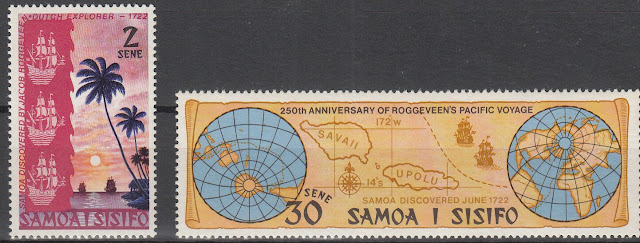


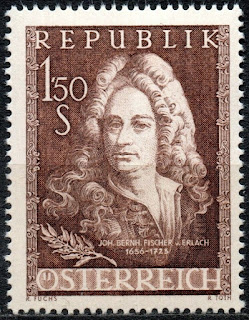
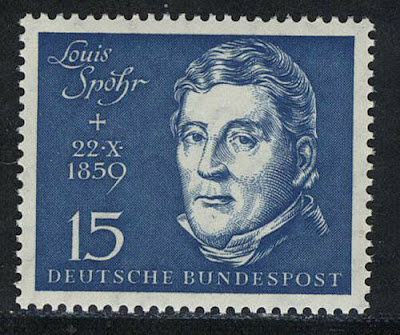

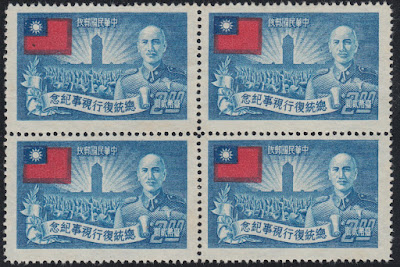
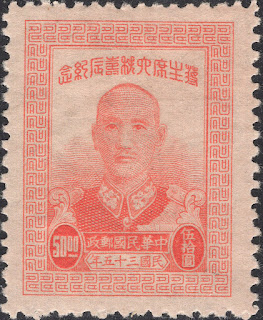
No comments:
Post a Comment